Articles from the Thoroton Society Newsletter
THE OLD MILL, BESTWOOD VILLAGE
By Howard Fisher
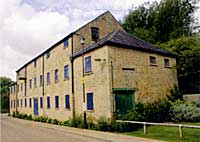
There are benefits to being the Nottinghamshire and Thoroton Society representative to the Council of British Archaeology relating to listed buildings. Not least is that I visit properties to which the general public has no access. This short article relates to one such building which I know from conversations is of interest to several members.
The Old Mill, Moor Lane, Bestwood Village is one of several mills built along the River Leen, initially using the river as motive power for the mill machinery. This mill possesses a large millpond, fed by the river and controlled by sluices and which is, nowadays, maintained by an angling club.
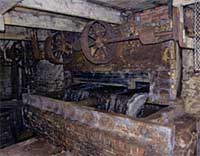
Old Mill was built by the Robinson family about 1783 in the same complex as Forge Mill which was working as an iron foundry in the C17th century. Originally built as a cotton mill Old Mill's subsequent use was as a corn mill and, latterly, as a store. Its last production was of pigeon feed and there are still some sacks of feed remaining in the building. It suffered badly from a fire in 1838 when the interior was gutted and the roof and northern gable severely damaged. Its present form dates from the rebuild after the fire.
It is a relatively simple structure of four stories with stone rubble filled walls and queen-post trussed roof. The upper floors are timber supported on substantial oak beams which are propped at mid-span by, mainly, wrought-iron columns. At both gable ends are two storey, butt-jointed lean-to additions of later date than the mill rebuild.
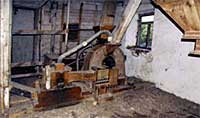
A re-roof was carried out using modern material, possible in the 1960s or 1970s, and some evidence of re-pointing is apparent.
The basement contains a mill-race which exits under the mill wall and adjacent Mill Lane to become an open culvert through a modern housing development and eventually joining the Leen. The water wheel was outside the main building and there remain the drive shafts and mechanisms for the mill machinery. Every floor has remnants of machinery, hoists and hoppers which provide an excellent insight into the mill's operations.
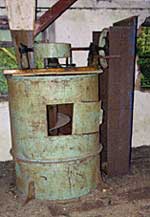
The mill was served by a short spur leading off what is now the Robin Hood railway and NET tram lines. There was a turn-table whose position is marked in the paving at the end of the mill, where the path to the mill-pond is accessed. I understand the turn-table was sent to an industrial museum but where this was is unknown to me at present.
Bayles & Wyllie bought the mill in 1935 and it remained in use by them until the late 1970s. They still own it and, to their credit, provide basic maintenance and supervision.
Access is dangerous, there is no lighting and the ground floor has collapsed in several areas, particularly in the entrance area. Sadly, and inspite of being well boarded-up, there has been a lot of vandalism and theft of fixtures and fittings. The roof has at least two holes in it and the upper floors are extensively used by pigeons as a roost.
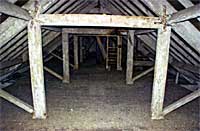
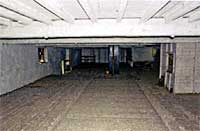
The mill is grade II listed and on the county list of buildings at risk. Applications have been made to convert it for residential purposes. There is no likelihood of future industrial use and, to date, the residential applications have all been withdrawn.
I consider it most important that this very historic building in the context of the River Leen industry has a suitable use found for it. A use that will see it well maintained and cared for. However, there is a dilemma, as with many old mills, relating the the machinery it contains. This machinery is part of the history of the mill and, whilst not unique in a UK-wide context, is important to this particular mill. It would be good if some way of preserving machinery within any development could be found. This is particularly true of the basement where the sluice mechanism is accessed and the drive shafts for the mill belts are still extant.
The photographs here will provide a snapshot of the mill as it now stands and my hope is that this brief summary is of help and interest.